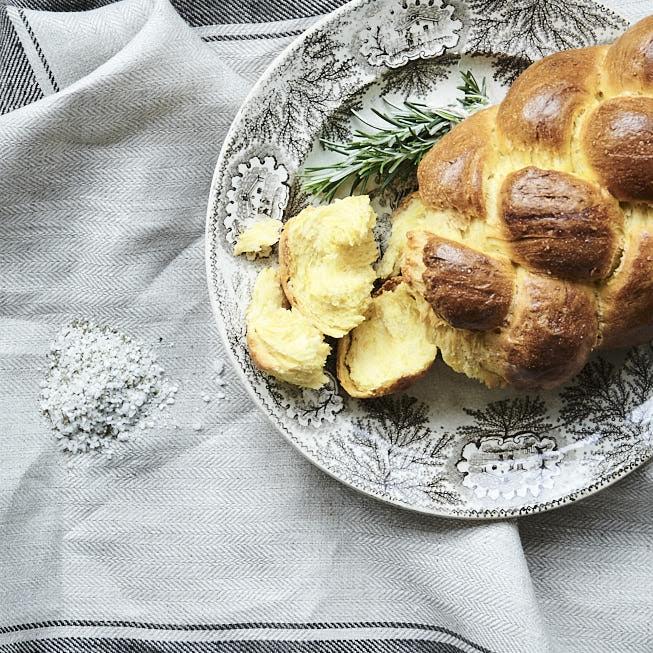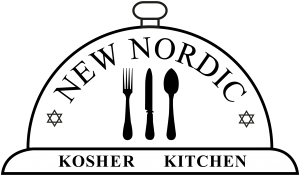Glossary
Glossary (or as close as it can come to translation…) from Hebrew and Yiddish
The key to a culture is its language. Although learning Hebrew and Yiddish is a big mouthful for most people (including me….), it can however still be fun to “peel the verbal onion” and get some insight. If you know the words already or would translate them otherwise, I apologize in advance.
Baalas Teshuvah (Hebrew) A person who was not raised orthodox, but who has explored Jewish religion and culture and found it to be their (here a feminine term) religious observant way of life. A male would be called baal teshuvah. The term is often referred to as a Jew who has “returned” to or chosen to live orthodox.
Batul means to nullify. Batul refers to a situation when a small amount of one food is accidentally mixed into a larger amount of a different food. When the ratio is one part to 60 parts or less, the smaller ingredient is generally considered to be null and void.
Bishul Yisroel refers to the preparation of certain foods for which it is necessary for the Mashgiach to light the fire.
Chodosh, literally, new, refers to the grain (wheat, barley, oats, rye, and spelt) that has not taken root before Passover. It is called “new grain.” Its consumption may be restricted until the following Passover.
Cholov Yisroel refers to all dairy products, including cheese and non-fat dry milk powder, which have been under constant Rabbinical supervision.
Fleishig – meat, denotes meat and poultry products, as well as dishes and utensils used in their preparation.
Glatt Kosher is the Yiddish word meaning smooth, and refers to beef from kosher slaughtered animals whose lungs are free of adhesions. Kosher consumers who are very stringent in accepting only high standards of kosher, demand that all meat products be “glatt.” The term is often mistakenly used to differentiate food items which have higher standards of kashruth from those which have a more “relaxed” level of kosher certification.
Halacha, literally, the path that one walks. It refers to Jewish Law, the complete body of rules and practices that Jews are bound to follow, including biblical commandments, directives of the Rabbis, and binding customs.
Hashgacha, literally, supervision, generally refers to kosher supervision.
Hechsher refers to the certification of a kosher product or ingredient, given by a Rabbi or a kosher supervisory agency.
Kasher – to make kosher, usually applied to the salting and soaking procedures used in the production of kosher meat and poultry. The term is also used to describe the kosherization procedure of a non-kosher facility or utensil, so that it may be used in the preparation of kosher food.
Kashruth – the state of being kosher.
Keilim – vessels or utensils.
Kli Rishon, Kli Sheni, Kli Shlishi , literally the first utensil, refers to a utensil that is used for cooking, baking or roasting food or liquid, and contains that hot food or liquid. When hot food or liquid is transferred from the kli rishon into a second utensil, this utensil is called a kli sheni. A kli shlishi is the third utensil into which hot food or liquid is transferred.
Kosher is the Hebrew word meaning fit or proper, designating foods whose ingredients and manufacturing procedures comply with Jewish dietary laws. The word kosher is also used in slang American, meaning that it is fine/okay.
Kosherization – the process of changing the status of equipment which has been used with non-kosher ingredients or products, to use with kosher ingredients or products.
Mashgiach – a person who is trained to supervise kosher food production.
Mehadrin refers to the most stringent level of kosher supervision.
Mikvah, literally, gathering, refers to a structure, a ritualarium, in which water is gathered for purposes of immersion.
Milchig – dairy, refers to dairy products as well as dishes, utensils, and equipment used in their preparation.
Mevushal refers to wine which has been cooked.
Orla refers to the Torah commandment to wait for three years before partaking of any fruit from fruit-bearing trees. The forbidden fruit of this period is known as orla.
Pareve – neutral, indicates a product that contains no derivatives of poultry, meat, or dairy ingredients and can therefore be eaten with either a meat, poultry or dairy meal. Pareve items include all fruits, vegetables, legumes, grains, eggs, kosher fish, etc.
Pas Yisroel refers to baked goods prepared in ovens, which are turned on by the mashgiach.
Shechita– the Torah prescribed manner of slaughtering an animal or fowl for consumption.
Shochet– one who is specially trained to slaughter kosher meat and poultry according to the Jewish tradition.
Shmitta refers to the agricultural cycle observed in Israel, in which every seventh year the land lies fallow.
Tevilas Keilim, meaning dipping of utensils, refers to the immersion of vessels, utensils, or dishes in a ritualarium (mikvah) before their first use.
Tovel – to dip or immerse in a ritualarium (mikvah).
Traiboring refers to the process of removing forbidden fats and veins from meat in order to be prepared for the next stage of kashering, namely, the salting process.
Treifah refers to food that is not kosher. The term is generally used to refer to all foods, vessels, and utensils that are not kosher. Literally, it means an animal whose flesh was torn or ripped.
Yoshon, literally, old, refers to the grain that has taken root before Pesach, even if it is harvested after Pesach. It is called “old grain.” It is permitted to be eaten without restriction. When a product is yoshon, it means that yoshon grains, including wheat, barley, oats, rye, spelt, were used in its preparation.
Popular Jewish Terms
Bar Mitzvah, literally, son of the commandment. Bar Mitzvah refers to a 13-year old boy who is now required to observe the commandments. Colloquially, Bar Mitzvah has come to mean the celebration commemorating a boy reaching the age of 13.
Bat Mitzvah, literally, daughter of the commandment In Aschenazi pronounced as As Mitzvah). Bat Mitzvah refers to a 12-year old girl who is now required to observe the commandments. Colloquially, Bas Mitzvah has come to mean the celebration commemorating a girl reaching the age of 12.
Birkas HaMazon means blessing of the food, commonly referred to as Grace After Meals. The recitation of birkas hamazon is called “bentsching” in Yiddish.
Bris – covenant of circumcision. It refers to the ritual circumcision of a male Jewish child, normally performed on the eighth day of his life. A male converting to Judaism also has a bris mila. The circumcision is in this situation sometimes a less drastic medical intervention (e.g. in some Reform Jewish communities).
Chupah – bridal canopy used in a Jewish wedding ceremony.
Kiddush – sanctification. Kiddush is the prayer recited over wine sanctifying Shabbat or a Yom Tov.
Seder – means order. See Seder under Pesach terms.
Seuda – a meal, specifically a festive or Shabbat meal.
Shabbat (in Yiddish) Shabbos is the seventh day of the week, which in the Jewish calendar begins at sunset on Friday and ends after dark on Saturday night.
Sukkah is a temporary outdoor dwelling (hut) used during the holiday of Sukkot.
Yom Tov refers to the holidays on the Jewish calendar. These include: Rosh Hashanah (September or October), Yom Kippur (September or October), Sukkot (October), Chanukah (December), Tu B’Shvat (January or February), Purim (February or March), Pesach (March or April), Shavuot (May or June) Tisha B’Av (July or August).
Glossary of Pesach Terms
Chometz refers to food products containing any grain (wheat, barley, rye, oats, or spelt) or grain derivative, not specially prepared for Pesach use.
Chometz Gamur, called “real chometz,” refers to products containing fermented grains. These products are biblically prohibited on Pesach.
Kitniyos – legumes, are those grains that can be cooked and baked in a fashion similar to chometz grain and yet are not considered, in the eyes of halacha, to be in the same category as chometz. Some examples are rice, corn, peas, mustard seed, and the whole bean family (i.e. kidney, lima, garbanzo, etc.). It is customary for Jews of Ashkenazic descent to refrain from eating kitniyos on Pesach.
Kosher for Passover/Pesach – foods acceptable for use during the Pesach holiday which require special preparation.
Matzot – specially prepared unleavened bread, which is acceptable for Pesach use.
Passover – Pesach in Hebrew – is the Jewish holiday commemorating the exodus from Egypt, observed in the spring.
Seder – means order. A seder is the Jewish ritual conducted as part of the observance of Passover. The Haggadah, the text from which the seder is conducted, contains the precise order of the prayers, song, discussion, story-telling, ritual foods and the festive meal.
Glossary of Jewish Foods
Jews have lived around the globe throughout history. Consequently, their cuisine reflects the culinary influences of their present host country combined with the strings back to countries their ancestors have left behind.
Food traditions become the connection to one’s past and present. With the introduction of the New Nordic Cuisine the philosophy is, that you try to use as many as possible ingredients from the regional resources in plants, fruit, fish, meat etc.).
Note. The “New Nordic cooking” is actually not as such an exclusive Nordic phenomenon, but basically reflects the “indigenous kitchen” in the region, where you live and cook your daily meals. The trend however is to look at your regions own resources and cook with locally grown plants/fruits from the forests, the beaches etc. nearby.
Blintz – a thin crepe-like pancake rolled around a filling of cheese or fruit.
Borscht – a classic beet soup served hot or chilled, pureed or chunky.
Challah – a sweet bread, usually braided, served on Shabbat or Jewish festivals.
Charoset – a mixture of fruit, wine and nuts eaten at the Pesach seder meal. The Charoset is symbolic of the mortar used by the Jewish slaves in Egypt.
Cholent – a slow cooked stew (from the French chaud – hot/warm and lent – which means slow), mostly served on Shabbat. Ingredients generally include beef, vegetables, beans and barley. Since it is not permitted to light a fire on Shabbat, and since Jews wanted to eat hot food on Shabbat as well, cholent became a popular dish. Cooking starts before Shabbat begins, and continues on a covered flame or in a crockpot on Shabbat.
Slow food is usually easy and not very time consuming to prepare, but takes time to cook. The advantage is, that the cholent’s ingredients tend to taste better because of the lengthy process.
Gefilte Fish– traditionally served on Pesach (with beetroot and horseradish mixture), made with ground or chopped fish and shaped into balls or a into (sliced) loaf.
Holiptches – stuffed cabbage, a favorite Hungarian dish.
Kasekuchen – cheesecake, traditionally eaten on Shavuot. See the Cheesecake recipe
Kreplach – small squares or circles of rolled pasta dough filled with ground beef or chicken and folded into triangles. They can be boiled and served in soup or fried and served as a side dish. They are traditionally served at the Erev Yom Kippur meal as well as on Hoshanah Rabbah and Purim.
Kugel – a casserole of potatoes, noodles or vegetables in an egg based pudding. Kugel is a traditional dish served on Shabbat or Yom Tov.
Latkes– potato pancakes, fried in oil, traditionally eaten during Chanukah.
Matzot – unleavened wheat bread/“cracker” – see Pesach.
Sufganiyot – round jelly doughnut boiled in oil, eaten during Chanukah
Tzimmes– a sweet stew containing carrots.

